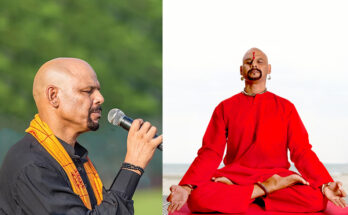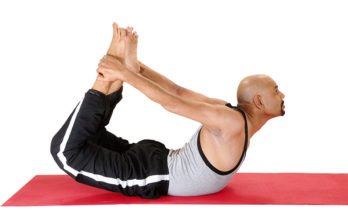Yoga for a good sleep. Shambhabi Mudra demonstrated by Yoga Guru Suneel Singh. Image Courtesy – Vijay Gautam
The amount of sleep the body needs depends on Age. Babies can sleep as much as 15 to 16 hours, while children can sleep 10-12 hours. At the other extreme, elderly people rarely enjoy a sound, unbroken sleep of more than 5-6 hours.
Modern life bombards us with stimulation Television sets, cell phones, radios and late night parties are constantly reminding us to stay alert. Our early ancestors did not have these impediments to sleep. They did not have houses with dark shades to avert morning sunlight, nor did they have light bulbs, T.V, Telephone and E-mail to stimulate them in the evening. Their Biological clocks were constantly being tuned to the systematic dark and light cycle of the earth’s changing seasons.
Insomnia is a disease of the civilized society, during sleep only tensed muscles and nerves get rest and renovation of the cells takes place. Regular practice of yoga is very beneficial for insomnia patients.
1 SHAMBHAVI MUDRA:
Sit in any comfortable meditation pose keep the head, shoulder and spine upright and straight. And place the hands on the knees in ‘Jyana Mudra’. Close the eyes and relax the whole body. Now look up word and in ward, focusing the eyes at the eyebrow centre. Hold the gaze as long as you are comfortable. Release if the slightest sensation or strain. Close the eyes and relax them. Try to do 5 minutes daily.(See the topmost picture for posture)
Benefits: This Mudra strengthen they eyes muscles and release accumulated tension in the area. It develops concentration, mental stability and the state of thoughtlessness. All ailments headache, sleeplessness, excessive sleep and eyes complications are cured.
Caution: People suffering from cataract surgery, glaucoma and eye operations should not perform ‘Shambhavi Mudra’. For advance practitioner it is a powerful technique for awakening ‘Agya Chakra’.
2 VAJRASANA: ‘Vajra’ means ‘Adamant’ or ‘Thunderbolt’ in Sanskrit. This asana makes the body as strong as the thunderbolt.
Method: Kneel down on the floor. Bring toes to join at back. Heals apart and big toes pointed towards each other. Lower the buttocks on to the inside surface of the feet with heal touching the side of the hips. Adjust hands on respective thighs, spine erect, hand and neck straight, close the eyes, and relax the arms and whole body.
Duration: Do it 5-10 minutes daily. This is the only Asana in yoga, which can be performed directly after meal.
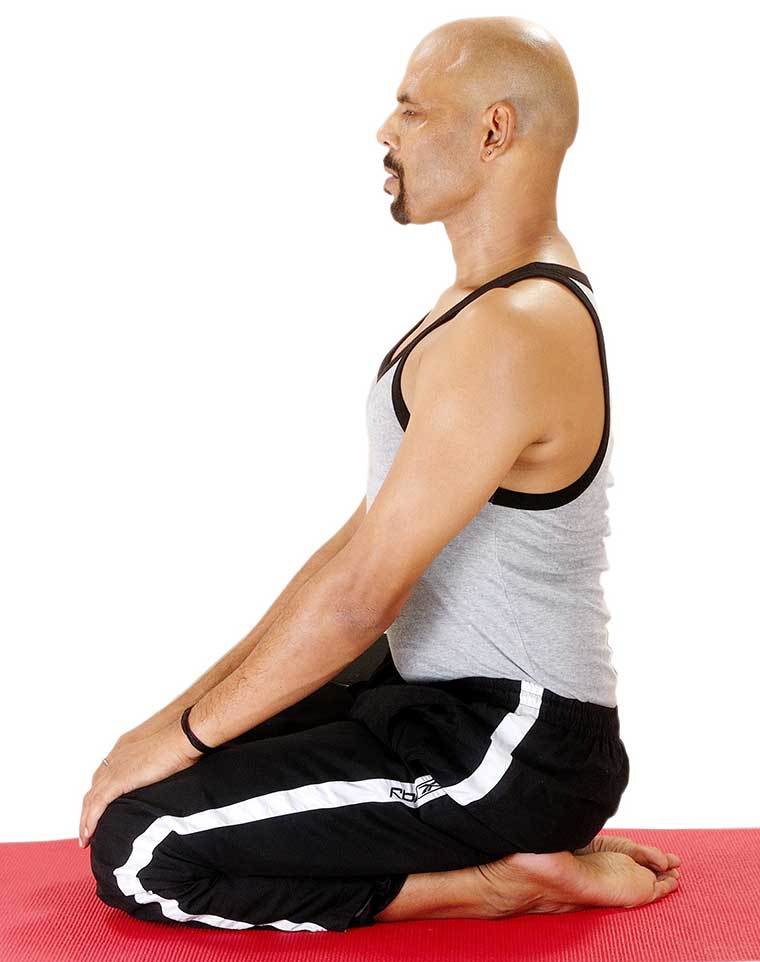
Demonstration of Vajrasana. Image Courtesy – Vijay Gautam.
Benefits: This Asana stimulates the Vajra Nada, activates ‘prana’ in ‘sushamana nadi’ and redirects sexual energy to the brain for spiritual purposes. It increases the efficiency of the entire digestive system and stomach ailments. And it is preventative measure against Piles and Hernia. Vajrasana increases the efficiency of the entire digestive system, relieving stomach ailments such as hyperacidity and peptic ulcer. It helps to strengthen the hips, thighs, knees, calves and toes. Vajrasana strengthens spine and tones up sexual organs of both male and female. This asana is Ram Baan for sleeplessness.
Caution: If there is pain in the thighs while performing asana then release the posture and stretched the legs and shake the feet vigorously until the stiffness disappears.
Read: Yoga for High Blood Pressure
3 YONI MUDRA: Sit in Padmasana or Sukhasana stretch out both palms and bring them to your face. Close your eyes with the help of the index fingers without pressing them. Put your fingers on either side of your nose, upper lips and lower lips, respectively. Both your ears must be pressed lightly with the thumbs. Your eyes and nose must not pressed, feel the emotions within you and concentrate on your breathing. Relax the whole body. The breathing will be deep but gradually it will, become quiet and shallow. Do it 5 to 10 mints daily.
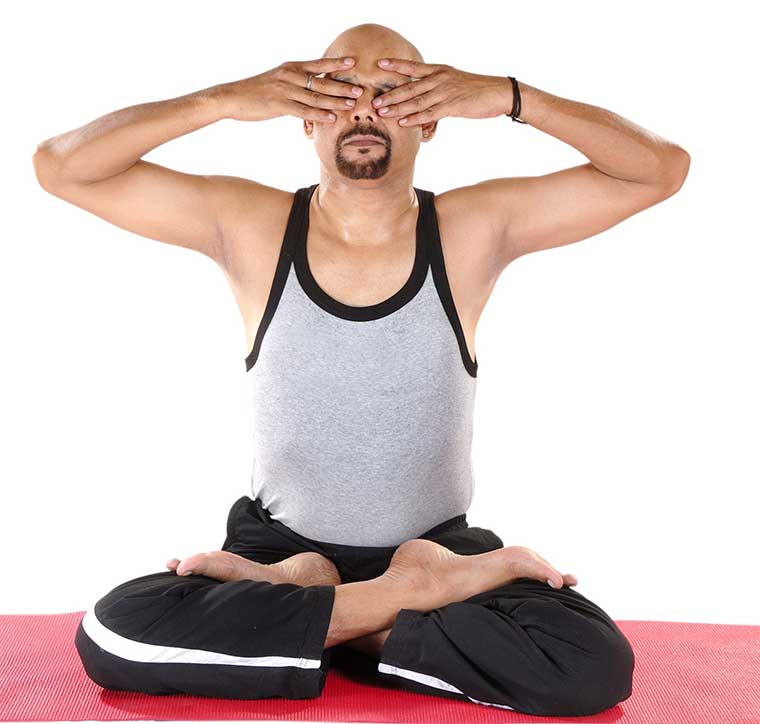
Yoni Mudra demonstrated by Yoga Guru Suneel Singh. Image Courtesy – Vijay Gautam.
Benefits: Look at the tortoise, when it feels that something is disturbing it from outside it withdraws its heads, legs and tail from the object and shut itself in. Yoni Mudra controls the external sences. It develops calmness, steadiness and the balance. This also helps to increase awareness and concentration.
4 NADI SHODHANA PRANAYAMA: Sit in comfortable meditative posture. Keep the head and spine upright. Relax the whole body and close the eyes. Then with help of right hand thumb close the right nostril. Now breathe in through left nostril. Then close the left nostril with ring finger and release the pressure of the thumb on the right nostril while breathing out through the right nostril next then inhale through the right nostril. Hold and release the left nostril. Do this one round of Nadi Shoudhana Pranayama. Do it minimum 20 rounds.
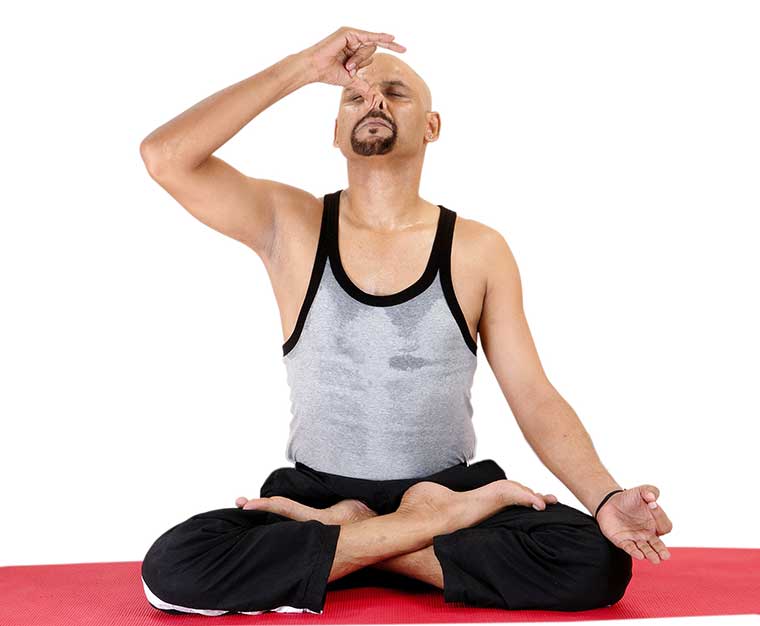
Nadishodhana Pranayama. Image Courtesy – Vijay Gautam.
Benefits: This pranayama ensures that the whole body is nourished by an extra supply of oxygen, Carbon Dioxide is efficiently expelled and blood is purified of toxins. This pranayama increase vitality and lower level of stress and anxiety by harmonizing the ‘prana’. ‘Nadi’ means channel or flow of energy and ‘shoudhana’ means purification. This pranayama is very – very good for stress and mental depression.
5 SHAVASANA: Lie on the floor on your back. Keep the legs straight on the floor with feet apart by about your shoulder width. Keep the arms straight by your sides with hands placed about six inches away from the body. The head and spine should be in a straight line. Close your eyes gently. Make the whole body loose and stop all physical movement. Mentally watch your breathing and allow it to become rhythmic and relaxed. Do it minimum 5 minutes.
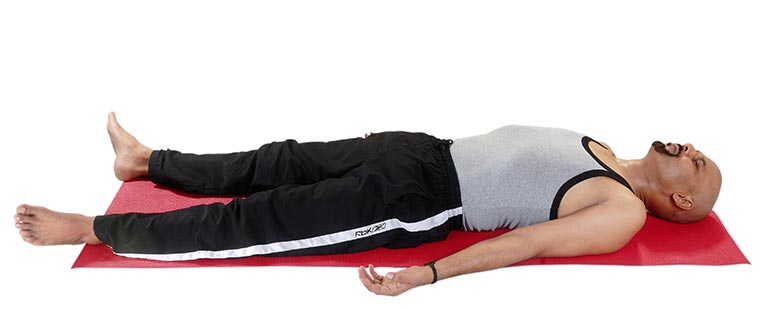
Shavasana. Image Courtesy – Vijay Gautam.
Benefits: This asanas leads to remove physical and mental fatigue. The breathing becomes more regulated and controlled naturally.
SLEEP IMPROVING TIPS:
Ensure that the Bed is comfortable and environment is relaxing.
Choose the right bed and pillows, because you will spend approximately one-third of your life there.
All of your body’s chemicals and hormones gradually learn an established pattern and will trigger to prepare you for sleep if you follow a daily ritual.
Be certain to avoid coffee, tea, soda and chocolate in the evening.
Resist napping during the day.
Drink at least 15 glasses of water each day.
Avoid bright light because it can trick our brains in thinking and heightened states of anxiety.
Read: Yoga and Arthritis
Try to avoid heavy eating before going to bed.
Take 1 tsp. of Ashwagandha powder in the morning with milk. This will regulate the digestive system and will help in combating stress.
Divide all the stresses in your life in to two categories, those you can do something about and those that are out of your control. Work on handling the first type and avoid the other whenever possible.



